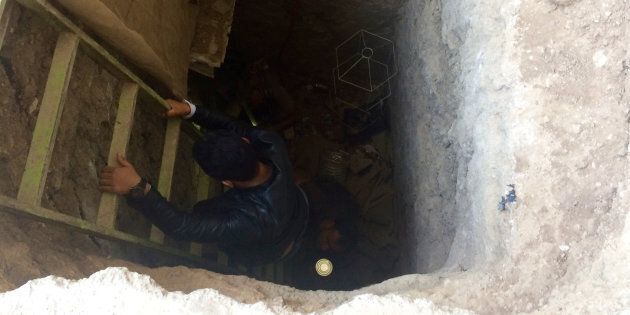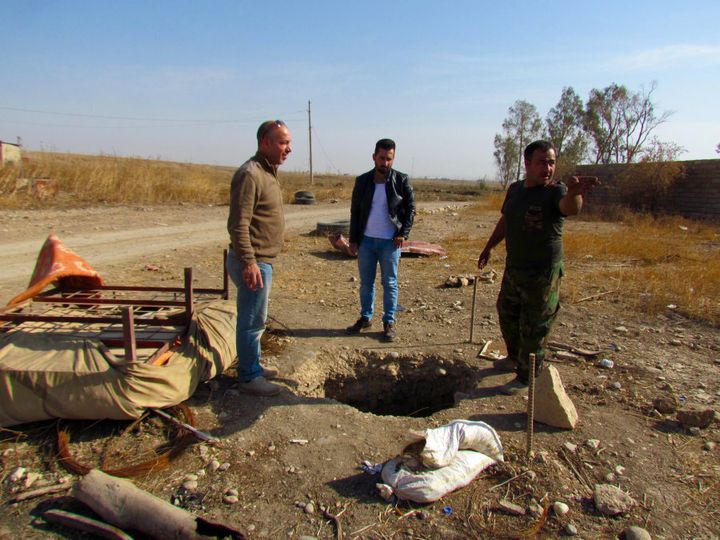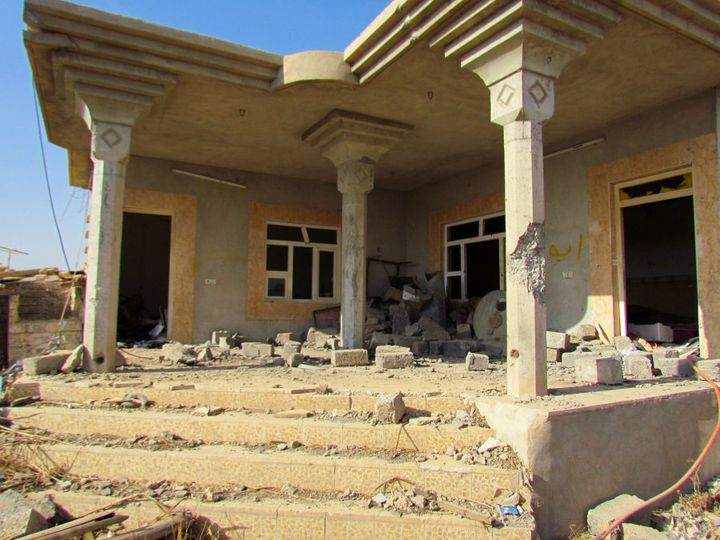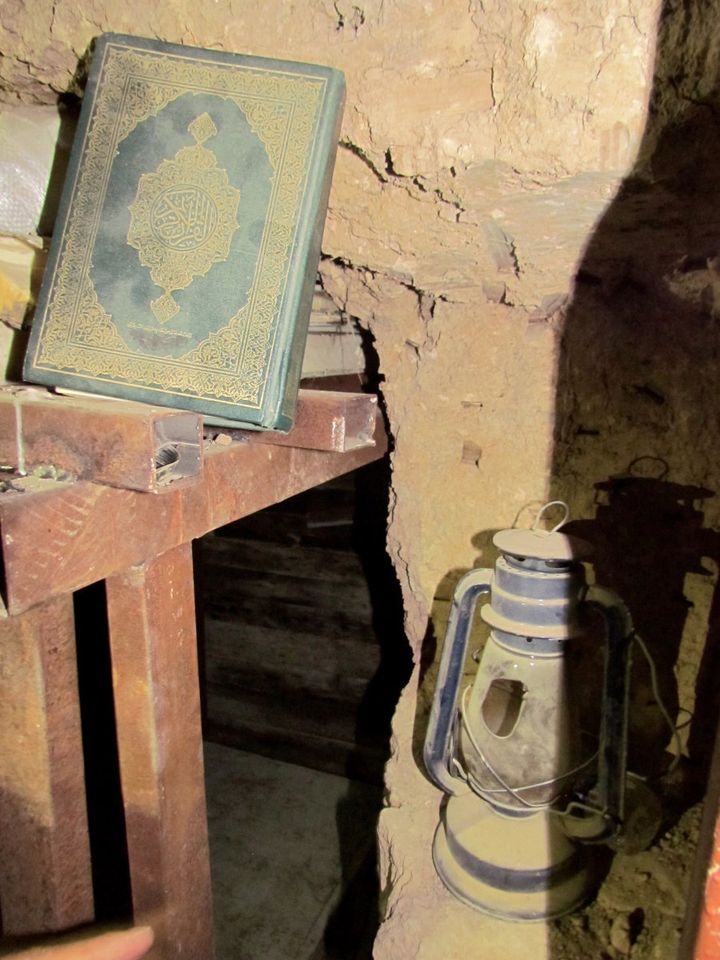
About 30km east of Mosul, the car I'm travelling in pulls up to a stop. "Get down," my friend and fixer Kosar says to me. "Come, come." He opens the car door and I hesitantly jump out.
Three Kurdish Peshmerga are standing in front of us, seemingly awaiting our arrival. I'm in the village of Shaquli. Iraq. Although I wouldn't call it a village. It looks like what used to be one family's home and piles of rubble. The evidence of coalition airstrikes is immediately apparent. The caved-in structures and a large crater in the ground are a dead giveaway.
"TNT," one of the Peshmerga says, pointing to some plastic oil containers just across from us, as I'm led over to a circular shaped hole in the ground. For a minute we all just stand around examining the hole, until someone ushers for me to go first.

"I'm not going first," I wail. "You go."
Kosar eventually agrees to go first and I follow behind. It's about a metre jump and scramble down onto some steps, which lead into the length of the tunnel.
Extensive networks of ISIS tunnels have been uncovered in many of the liberated areas of Iraq. A guerrilla warfare tactic, the ISIS tunnels served many different functions. They allowed ISIS fighters to pass between houses and under roads undetected, and to avoid coalition airstrikes. They also allowed fighters to pop up at various points and ambush their enemy, or to quickly escape. No one knows exactly how long it took ISIS to build the tunnels, but they had large-scale drilling machinery to help them.
The tunnel we are in runs about 100 metres long, with a number of square rooms coming off the sides.
"This is the restroom," one of the Peshmerga says, as I'm led along the length of the tunnel, flashlight in hand.
The ingenuity of the ISIS fighters is evident. The walls are carved out and reinforced with wooden posts and metal-panelled walls. Electrical wires have been run throughout, once supplying the tunnels with electricity and lighting. Fans, which once provided ventilation, are knocked over on the floor.

"This is the kitchen." It is a room with pots, pans, and even a makeshift exhaust. Along with a bag of lentils, a packet of stale Iraqi flat bread lies intact in a bread basket, still wrapped in its plastic, untouched. It is an indication that whoever was living here must have left in a hurry.
"This is what Daesh ate." Someone picks up a bag of dates and shows it to me. "It's from Turkey," he says.
I see cans of food, empty water canisters, packets of crisps, potatoes, onions. They are still in good condition. Even a packet of Sewak Al-Falah, a twig used for teeth cleaning, is found. Pillows, cushions, blankets and other materials are strewn around the rooms. By now they would have been rummaged through numerous times by eager Peshmerga keen to explore their new find.
The tunnel comes up at the back of a family house. Soil from the drilling is sandbagged up along the walls inside the house, and household furniture has been thrown into a separate room.

As I'm climbing up the ladder, one of the Peshmerga says that maybe one day, more visitors from Australia might come to visit this tunnel.
Only an hour or so earlier I had been sitting with a Shabak family in Khazir camp, who'd had their home taken over by ISIS and were relocated. Shabak are an ethno-religious minority of Iraq, who have their own dialect and religion. The family consists of a mother, two sons, and one daughter. The father passed away years ago. Another sister is still living in Mosul, but there is no news from her.
As we're sitting in the tent, the eldest son recounts the way in which they were kicked out of their village of Mofaqia in 2014, when their area was declared a military area by ISIS. He says that as they were leaving, ISIS had promised them their stuff would be kept safe and this is partly why they agreed to leave their home and village.
The family then made a strategic decision to move closer to the Iraqi Kurdistan region to the village of Tobzawa, with the hope that when the time was right they could cross more easily into the safety of Iraqi Kurdistan.
After one year living under ISIS, the son returned to their village to check on their property. When he returned he saw that everything from their house was gone. He asked ISIS members what had happened to the family's belongings, but he was told that they didn't have any information about what had happened to it. Maybe their furniture was moved to Syria. Maybe it was stolen or sold. They have no idea. It was all gone.
